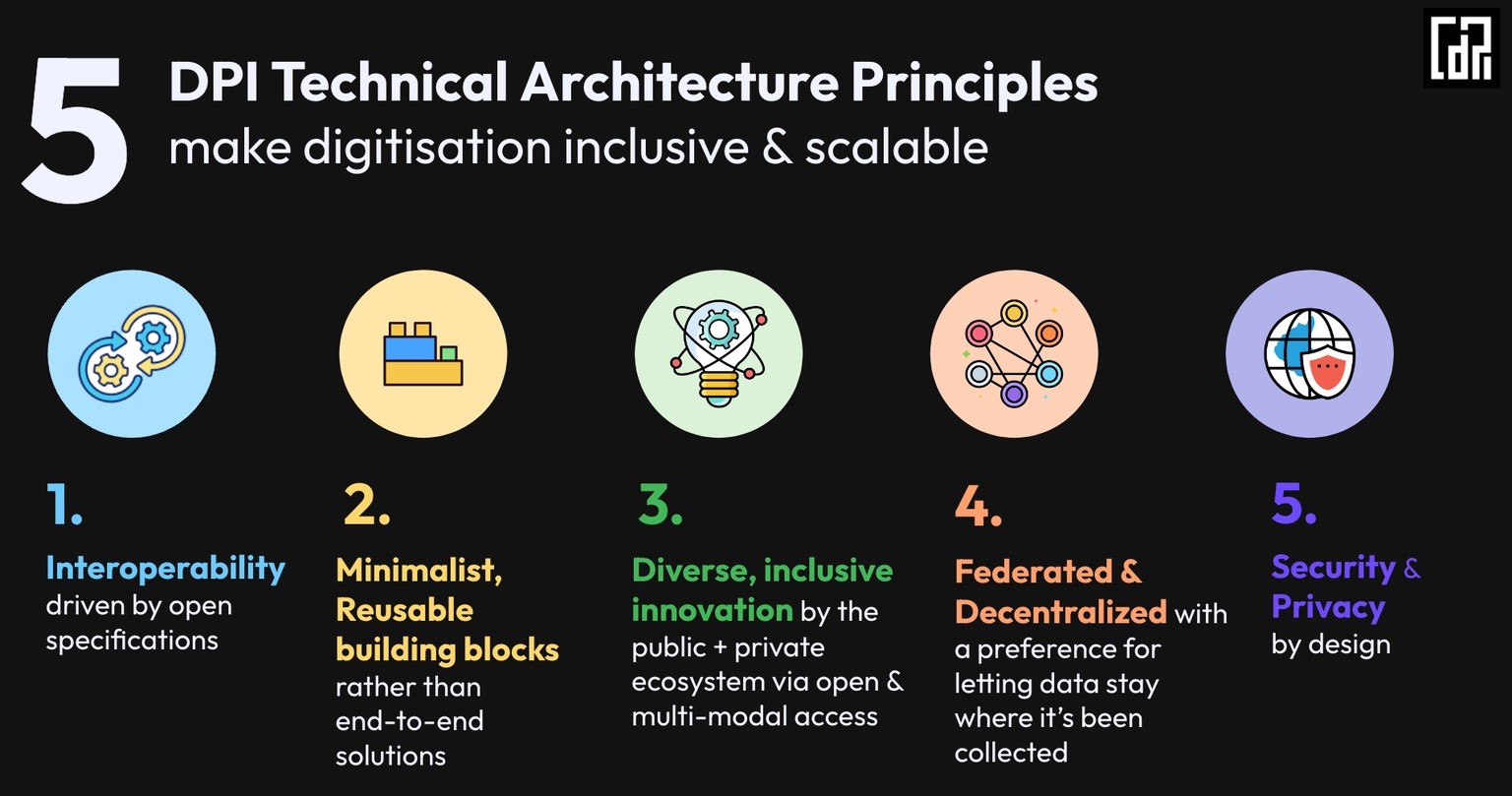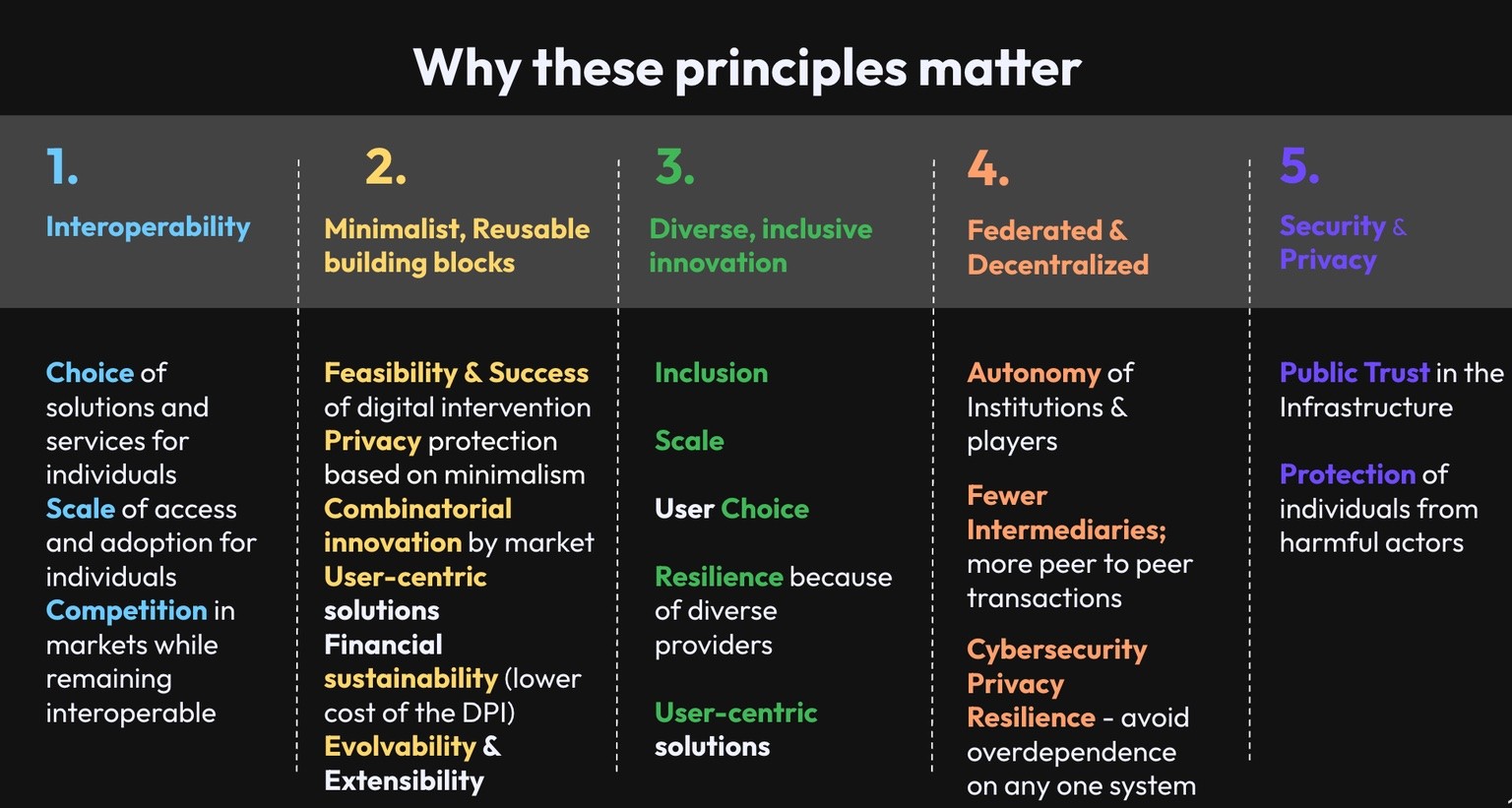The Evolving Landscape of Digital Public Infrastructure

(This article first appeared in the DPI Exemplar stories: Book of case studies, supported by Co-Develop, in November 2024)
What is the difference between traditional digitisation, and taking a DPI approach to digitisation? In other words, what makes something DPI? This is an important distinction to consider—not to arrive at a rigid formal definition but to understand how it can enable governments and the broader ecosystem to engage with DPI effectively.
In the traditional digitisation approach, governments typically build a full-stack solution each time they must address a problem. This involves a new RFP, a fresh bidding process, a different vendor, and a standalone solution that is optimised for the specific problem in question.
However, this is not how we approach infrastructure in our brick-and-mortar economy. We have shared public infrastructure—such as roads or electricity—that is used by government ministries, the private sector, and society as a whole. We can draw several valuable lessons from this shared experience over the past couple of hundred years and think about how similar layers of infrastructure can support our digital future in an inclusive, safe, and equitable manner.
Within the technology domain, early innovation in the internet was focused on developing global public infrastructure. Open standards and specifications — TCP-IP, HTTP, HTML, and SMTP for the Internet, as well as GSM, SMS, and LTE for mobile networks — have generated exponential public value in the 21st century. As the original digital infrastructure of the late 20th century, the Internet, GPS, and mobile networks triggered a plethora of public and private innovation, breaking barriers and driving inclusion.
Similarly, digital public infrastructure is set to emerge as a critical and dynamic component of economic and social progress in the digital century ahead of us.
While there is growing consensus about the value of a DPI approach, the definitions of DPI are emerging. G20 Digital Economy Ministers Group declared in India in Aug 2023, “Under the Indian Presidency’s initiative, we recognise that digital public infrastructure, hereinafter referred to as DPI, is described as a set of shared digital systems that should be secure and interoperable, and can be built on open standards and specifications to deliver and provide equitable access to public and/or private services at societal scale and are governed by applicable legal frameworks and enabling rules to drive development, inclusion, innovation, trust, and competition and respect human rights and fundamental freedoms. Considering the diverse approaches of G20 members to digital transformation, we recognise that DPI is an evolving concept that may not be limited to sets of digital systems with these characteristics and could be tailored to specific country contexts and can be referred to with different terminologies.”
Other organisations have defined DPI in slightly different ways. But rather than getting into a precise definition, we will focus on some essential principles that are necessary for any technology solution that adopts a DPI approach.
To outline some of these principles, we refer to the articulation by the Centre for Digital Public Infrastructure (CDPI).
It identifies five foundational categories for DPIs in the current scenario:
- Verifiable identifiers and registries
- Payments
- Data sharing and open AI/ML models
- Trust infrastructure
- Discovery and fulfilment
All known DPI deployments covered in this book or otherwise fall into some or all of these categories, and are available at mass scale at a low cost.
CDPI further identifies five technology design principles that a digital system must meet to qualify as a DPI:

When implemented, these five technical principles help DPIs achieve societal outcomes of inclusion, user choice, innovation, scale of delivery, speed of services, public trust, competition in markets, and others.
Other important and ongoing efforts are focused on developing and refining design principles, which will continue to evolve. However, the fundamental purpose of DPI is to prioritise inclusion, safeguards, and equality. These improved societal outcomes will be possible only with deliberate public policy choices, including how we make use of local strengths and capabilities in each country to achieve these outcomes.

The potential of DPI can be truly realised only with effective governance, responsive grievance redress mechanisms, and a favourable interplay between the state, markets and society.
Looking Ahead
The evolving nature of DPIs underscores the dynamism and urgency of building digital infrastructure, which must be continually adapted to meet the changing needs of society. Although there may not be a single, universally agreed-upon definition, the core principles provide a framework for building robust and inclusive DPIs.
What is clear, however, is the potential for a positive societal impact through DPIs. As we move forward, collaborative efforts that embrace diverse perspectives and uphold core principles will be crucial for realising the full potential of DPIs. In essence, DPI is a work in progress, but it has the power to shape a more inclusive and prosperous future.
